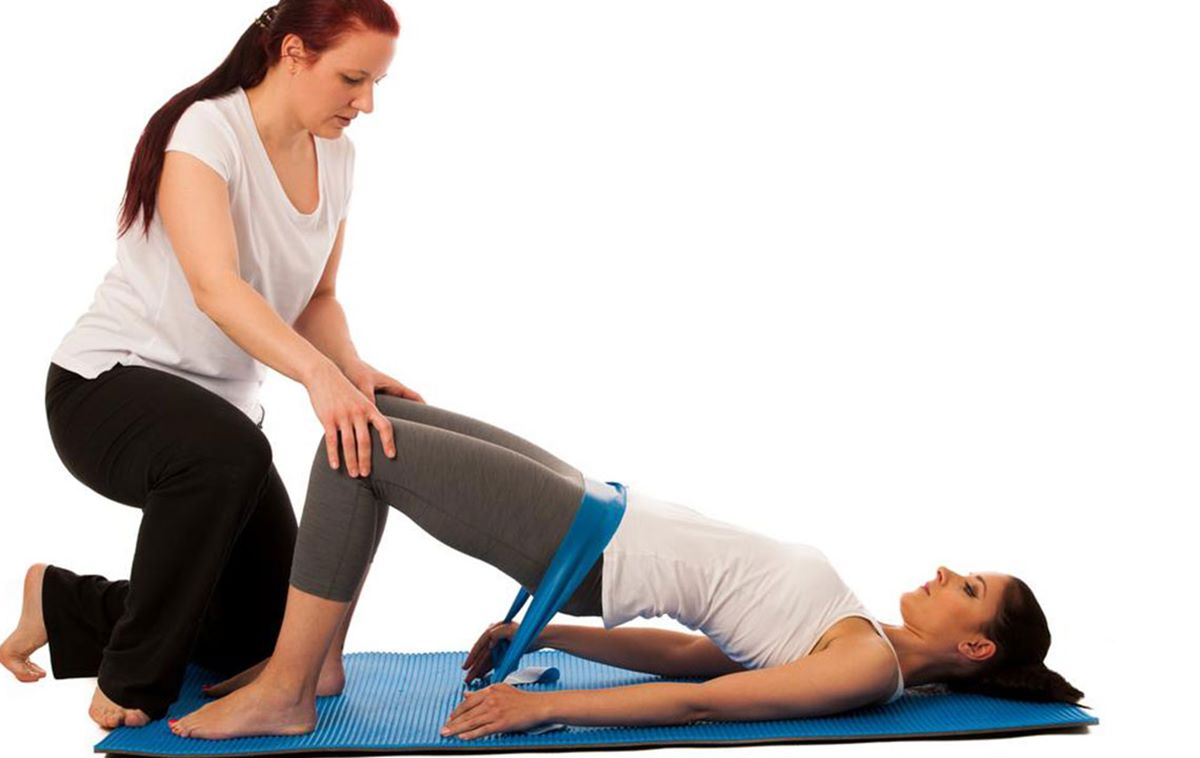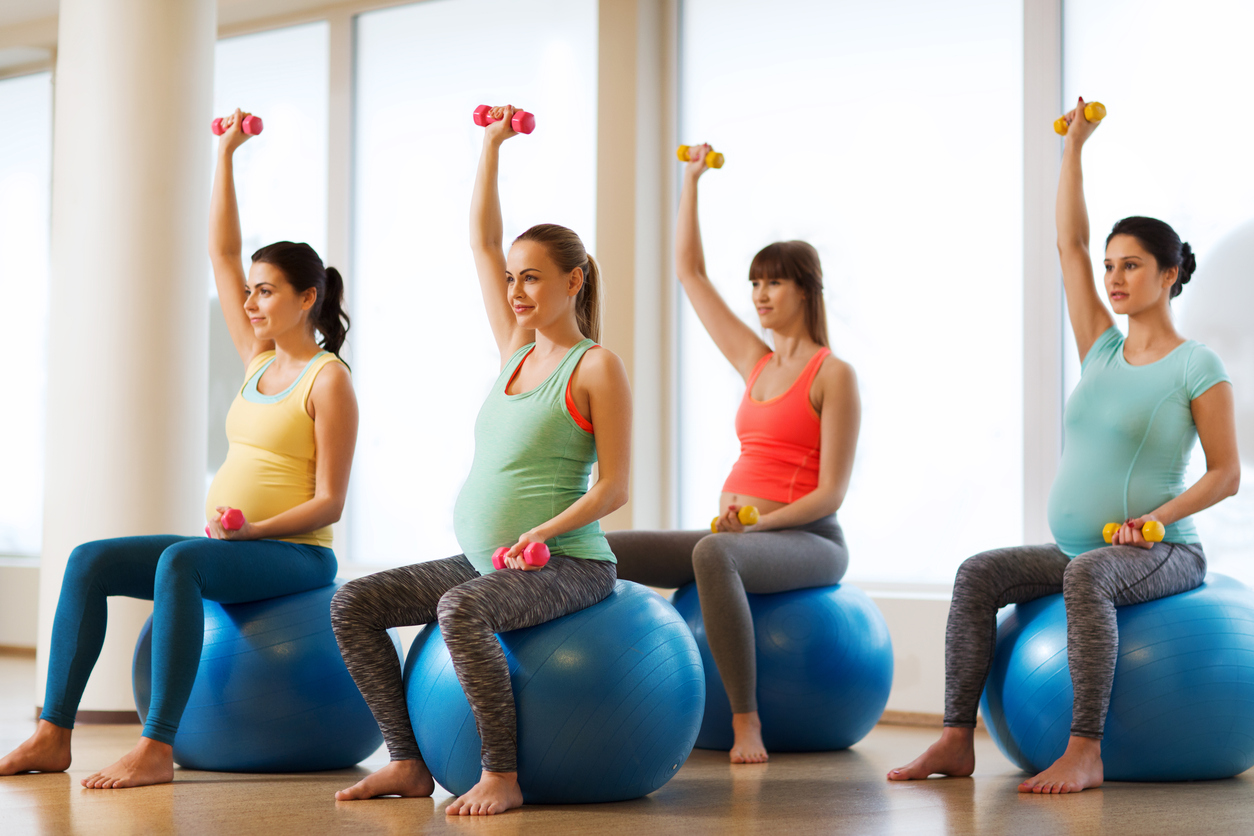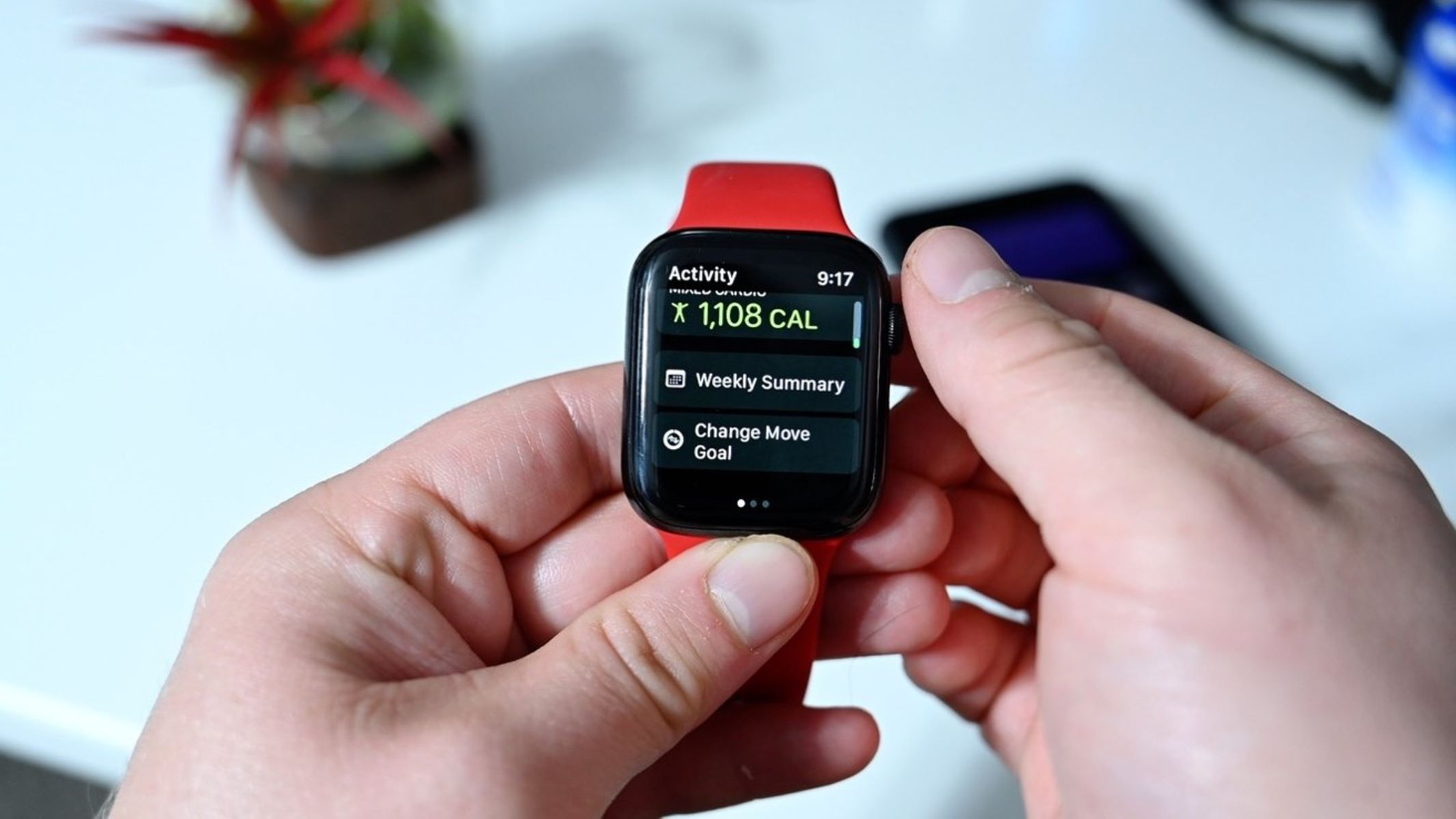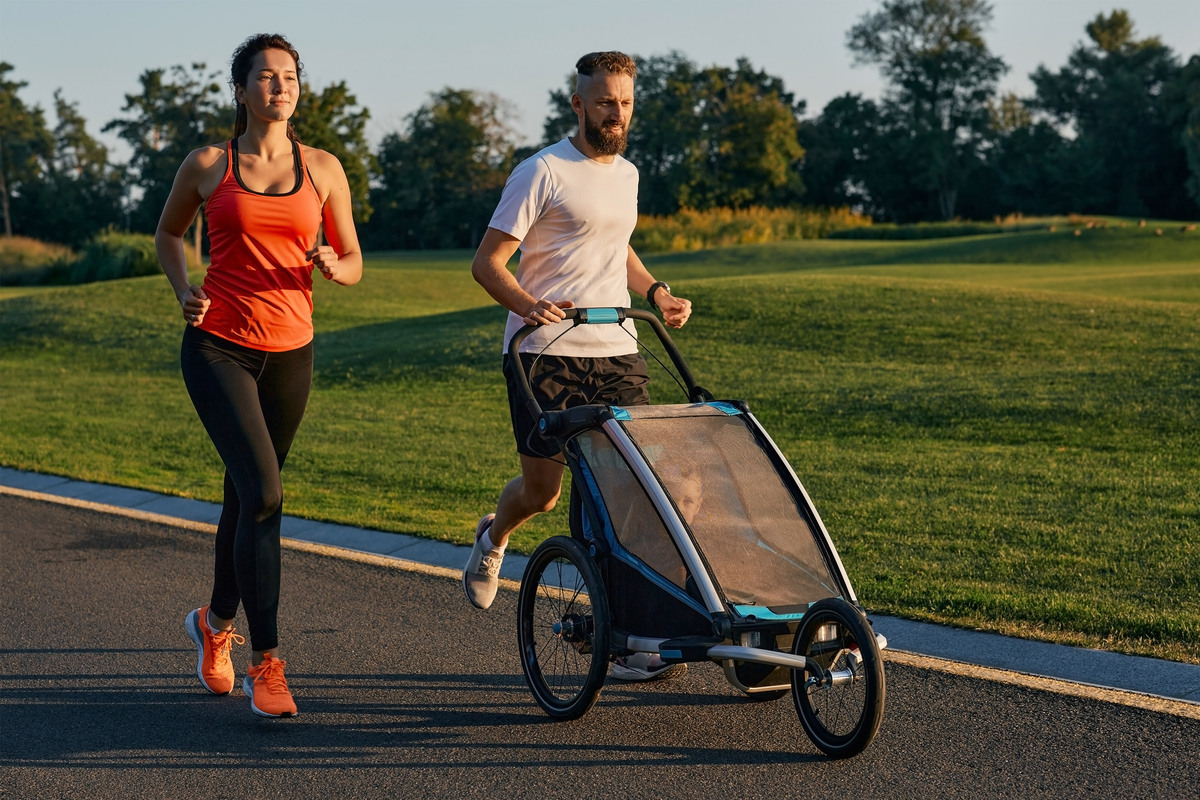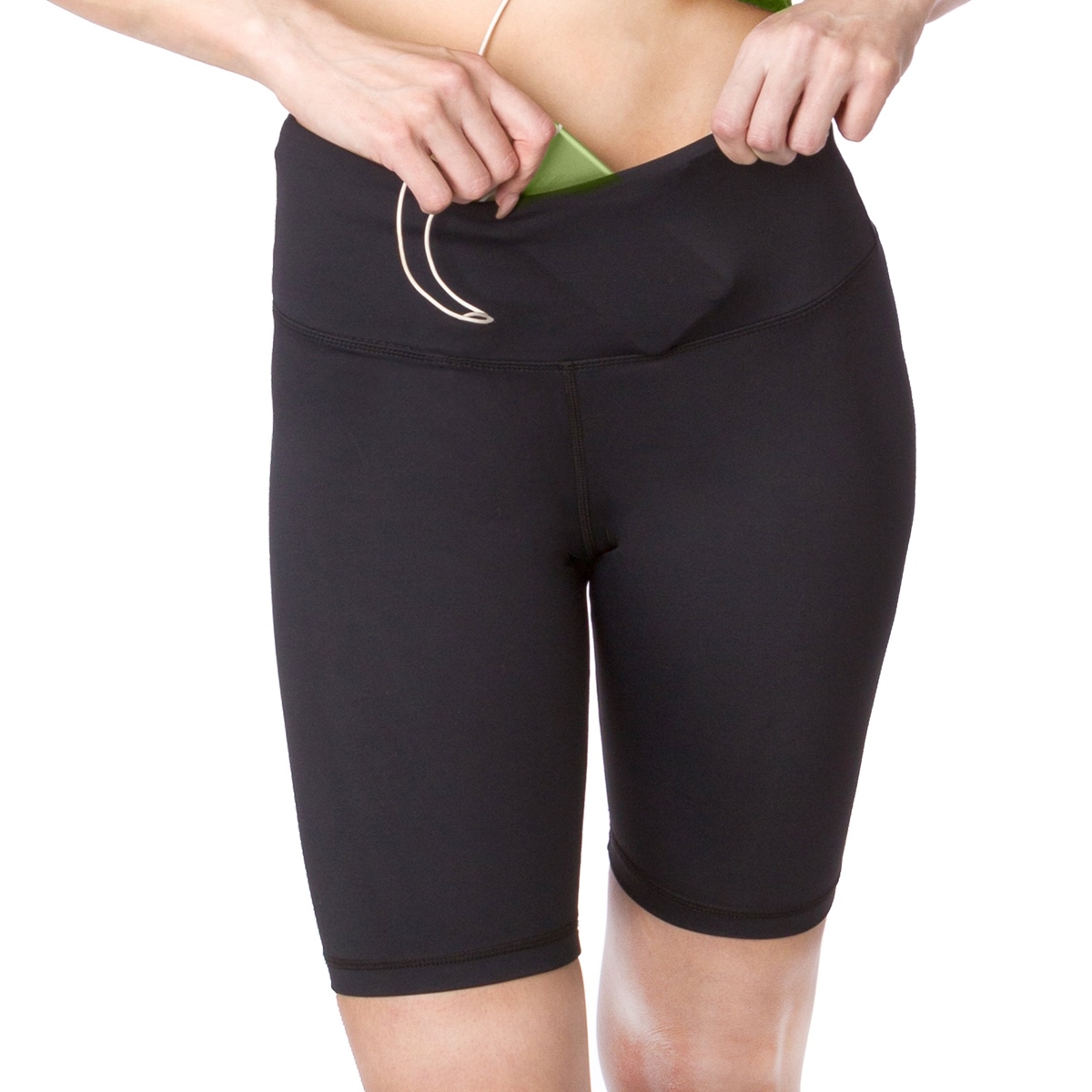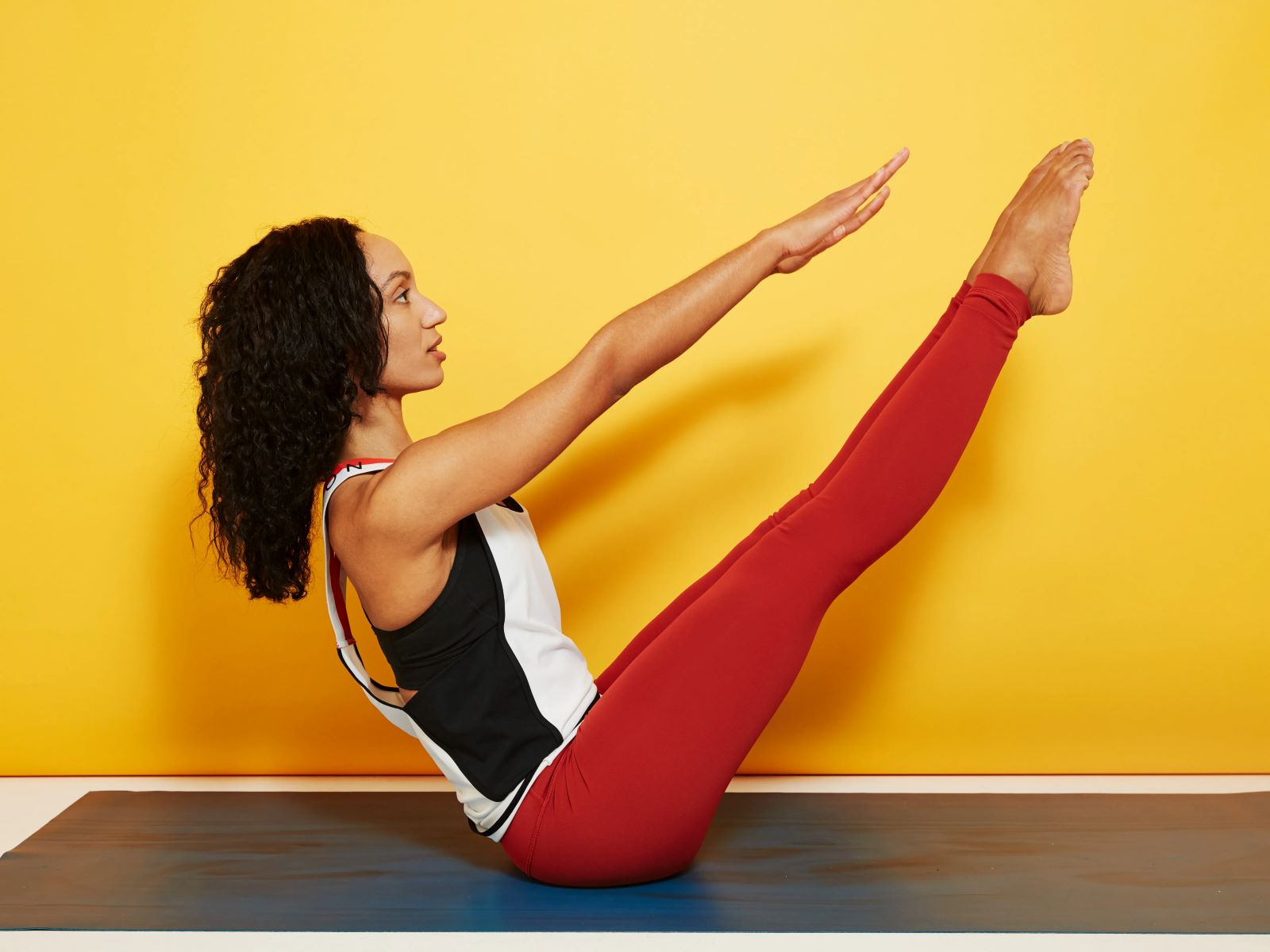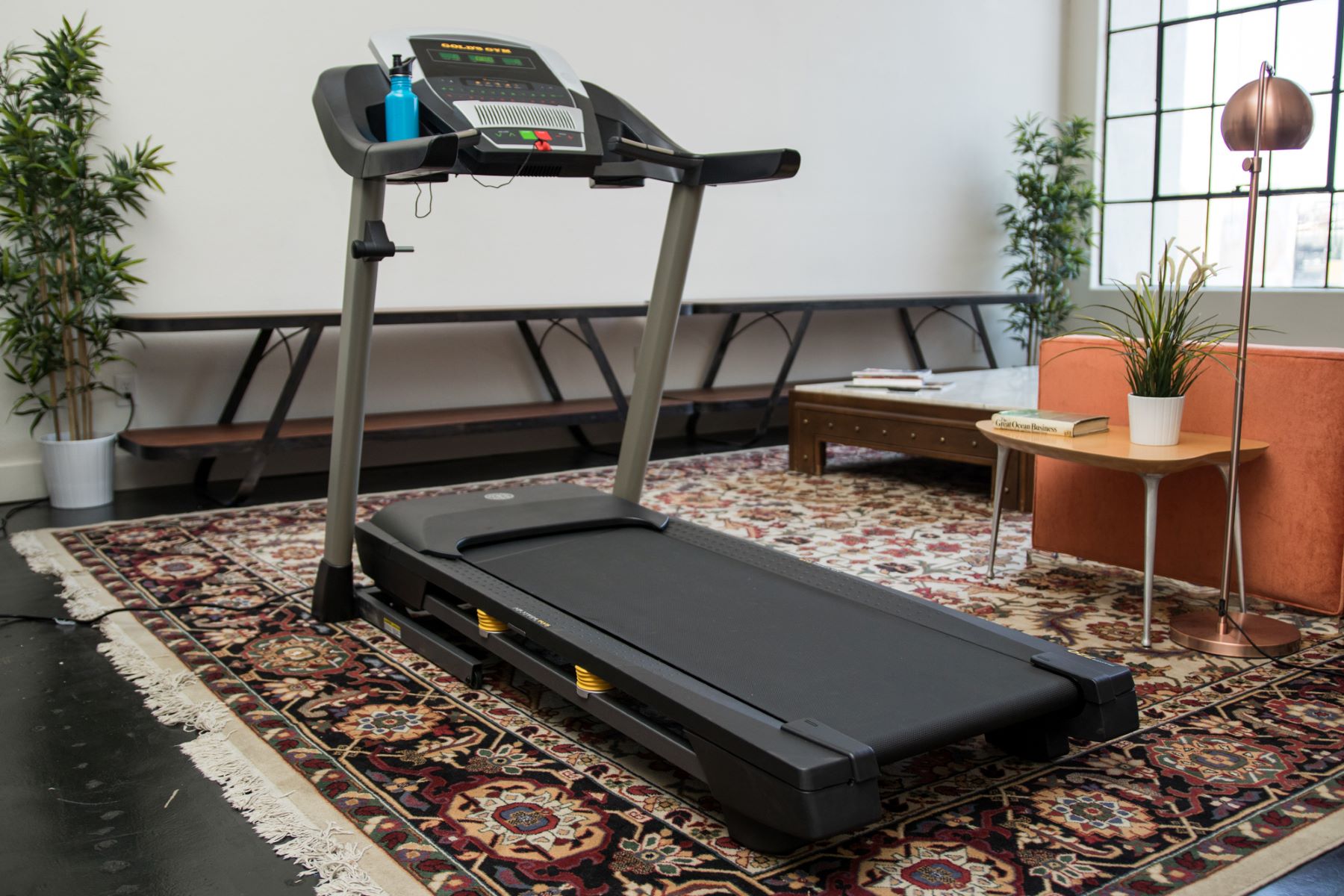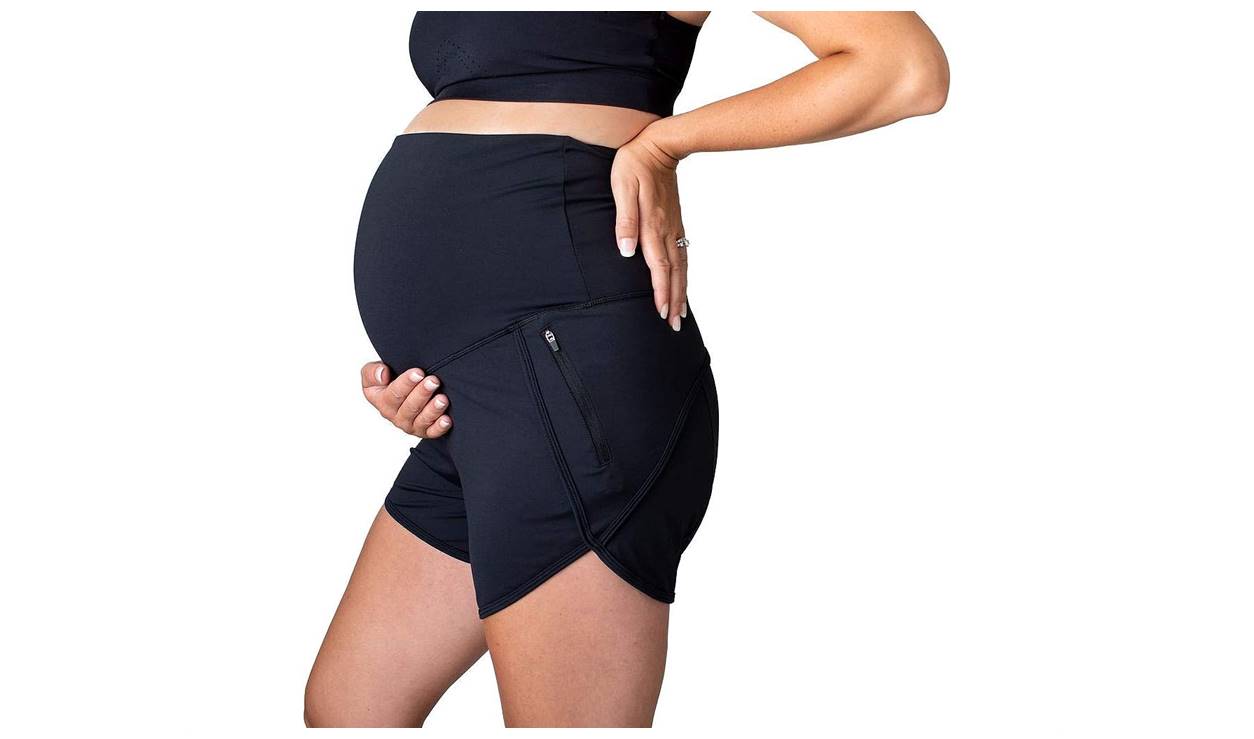Home>Misc>Featured>When Can I Start Walking On A Treadmill Postpartum


Featured
When Can I Start Walking On A Treadmill Postpartum
Modified: October 25, 2023
Learn when it's safe to start walking on a treadmill after delivery. Check out our featured guide for expert advice on postpartum exercise.
Introduction
After the joyous experience of childbirth, many new mothers are eager to resume their pre-pregnancy activities, including exercising and getting back into shape. One popular form of exercise that can be a great option for postpartum women is walking on a treadmill. Walking is a low-impact activity that can help improve cardiovascular fitness, boost mood, and aid in weight management.
In this article, we will explore the benefits of walking after delivery and discuss the appropriate timeline for starting this activity. We will also provide guidance on how to safely incorporate walking into your postpartum routine, including precautions and tips for making walking a pleasant and effective exercise.
It is important to note that every woman’s postpartum journey is unique, and it’s essential to consult with your healthcare provider before starting any exercise program. Your healthcare provider can assess your individual circumstances, consider any specific postpartum complications or medical conditions, and provide personalized recommendations for when and how to start exercising.
So, if you’re wondering when you can safely start walking on a treadmill after delivery, let’s dive in and discover how this form of exercise can benefit your postpartum recovery.
Benefits of Walking After Delivery
Walking after delivery offers a variety of benefits for new mothers. Here are some of the key advantages:
- Improved cardiovascular fitness: Walking is a great way to increase your heart rate and improve cardiovascular endurance. This can help strengthen your heart and lungs, leading to better overall fitness.
- Weight management: Walking can help you shed the excess weight gained during pregnancy. It is a low-impact exercise that burns calories and can be easily incorporated into your daily routine.
- Mood enhancement: The postpartum period can bring about a range of emotions. Walking releases endorphins, known as “feel-good” hormones, which can help alleviate postpartum blues and improve your mood.
- Increased energy levels: Despite the challenges of sleep deprivation and adjusting to a new routine, regular walking can help boost your energy levels and combat fatigue.
- Stress reduction: Walking is a natural stress reliever. Engaging in this gentle exercise can provide a sense of calm and help reduce anxiety levels.
- Muscle toning and strength: Walking activates and strengthens the muscles in your legs, core, and lower back. This can aid in toning your body and improving overall strength and stability.
- Improved digestion and bowel movement: Walking can help stimulate your digestive system, reduce constipation, and improve bowel movements, which can be a common concern after childbirth.
- Social interaction and mental well-being: Walking outdoors provides an opportunity to connect with other new mothers, join a walking group, or simply enjoy some fresh air and a change of scenery.
These benefits make walking a highly recommended exercise for new mothers. However, it is crucial to start slowly and gradually increase your walking duration and intensity. Let’s explore the appropriate timeline for starting your postpartum walking routine in the next section.
Healing and Recovery Timeline
The healing and recovery timeline after delivery can vary from woman to woman. It is important to listen to your body and consult with your healthcare provider before starting any postpartum exercise program, including walking on a treadmill.
In the immediate period following delivery, your body needs time to heal. This includes the healing of the perineal area, recovery of abdominal muscles, and adjustment of hormonal levels. Typically, healthcare providers recommend waiting for at least six weeks before starting any rigorous exercise or high-impact activities.
However, gentle walking can often be started weeks earlier, as it is a low-impact exercise that can be easily modified based on your comfort level. In the first few weeks after delivery, short and slow strolls around your home or neighborhood can be beneficial for promoting blood circulation, reducing swelling, and boosting overall recovery.
After the initial recovery period, you can gradually increase the duration and intensity of your walks. By around four to six weeks postpartum, most women can begin incorporating more structured walking sessions into their routine. This may include walking on a treadmill at a slow to moderate pace for 10-20 minutes at a time.
It is crucial to pay attention to any signs of discomfort or pain during and after your walks. If you experience heavy bleeding, increased pain, or any other concerning symptoms, it is important to consult with your healthcare provider to ensure proper healing and to rule out any complications.
Remember, every woman’s recovery timeline may differ, particularly if there were any complications during childbirth. Your healthcare provider will be the best person to provide guidance specific to your situation and to ensure that you are progressing at a pace that is safe and appropriate for your individual recovery.
Next, let’s discuss the importance of consulting with your healthcare provider before starting your postpartum walking routine.
Consultation with Healthcare Provider
Before you start any postpartum exercise program, including walking on a treadmill, it is crucial to consult with your healthcare provider. Your healthcare provider can offer personalized guidance based on your unique circumstances and ensure that you are ready to begin physical activity.
During your postpartum check-up, your healthcare provider will assess your overall health, including factors such as the type of delivery you had, any complications or medical conditions, and your recovery progress. They will be able to provide specific recommendations regarding the appropriate timing and intensity of your walking routine.
If you had a C-section, your healthcare provider may advise waiting a bit longer before starting any exercise program. The incision site needs time to heal, and it is essential to follow their guidance to prevent any complications.
Additionally, if you experienced any pregnancy-related complications such as gestational diabetes, preeclampsia, or preterm labor, your healthcare provider may have specific instructions for your postpartum exercise regimen.
Consulting with your healthcare provider serves multiple purposes. It ensures that you are physically ready for exercise, minimizes the risk of complications, and provides you with peace of mind knowing that you have professional guidance throughout your postpartum journey.
Your healthcare provider may also recommend modifications or additional exercises to complement your walking routine. These may include pelvic floor exercises, stretching, or core strengthening exercises. It is essential to follow their recommendations to promote a safe and effective recovery.
Remember, your healthcare provider is your trusted resource for postpartum care and can provide personalized recommendations tailored to your specific situation. By working together, you can create a plan that supports your recovery and helps you make a smooth transition into your new exercise routine.
Next, we will explore the signs that indicate you are ready to start walking after delivery.
Signs That You’re Ready to Start Walking
Knowing when you’re ready to start walking after delivery is essential for a safe and effective postpartum exercise routine. Here are some signs that indicate you may be ready to begin:
- Approval from your healthcare provider: If your healthcare provider has given you the green light to start exercising, including walking, it is a clear indication that your body has sufficiently healed and that you can safely begin incorporating physical activity into your postpartum routine.
- Decreased postpartum bleeding: Typically, postpartum bleeding gradually decreases over time. If you notice that your bleeding has become lighter or has mostly stopped, it is an indication that your body is healing, and you may be ready to start walking.
- Improved energy levels: If you are experiencing an increase in energy levels and are feeling less fatigued, it may be a sign that your body is ready for some light exercise, such as walking. It’s important not to push yourself too hard initially and to start at a pace that feels comfortable.
- Decreased pain and discomfort: If you had a vaginal delivery, you may have experienced perineal pain or discomfort. As these symptoms subside and you feel less pain in the perineal area, it may be an indication that you can start incorporating walking into your routine.
- Improved mobility and strength: If you have noticed an improvement in your overall mobility and feel stronger, it may be a sign that you are ready to engage in light exercise like walking. Starting with short walks and gradually increasing duration and intensity can help you safely build strength and endurance.
- Emotional readiness: While physical readiness is important, it is equally essential to consider your emotional well-being. If you feel motivated and mentally prepared to start exercising, walking can be a great way to boost your mood and promote overall mental health.
Keep in mind that every woman’s postpartum recovery timeline is unique. It’s crucial to listen to your body’s cues and start at a pace that feels comfortable for you. Be mindful of any pain, discomfort, or fatigue during and after your walks. If you experience any concerning symptoms, it’s important to consult with your healthcare provider.
In the next section, we will discuss the precautions and safety measures to consider before starting your postpartum walking routine.
Precautions and Safety Measures
While walking is generally considered a safe exercise for most postpartum women, it’s important to take certain precautions and follow safety measures to ensure a smooth and injury-free experience. Here are some essential precautions and safety measures to keep in mind:
- Listen to your body: Pay close attention to any signs of discomfort, pain, or fatigue during and after your walks. If you experience any unusual symptoms, such as dizziness, shortness of breath, or excessive bleeding, stop exercising and consult with your healthcare provider.
- Start slowly and gradually: Begin with shorter duration walks at a slower pace and gradually increase both duration and intensity as your body becomes accustomed to the exercise. Trying to do too much too soon can increase the risk of injury and delay your recovery process.
- Proper warm-up and cool-down: Prior to each walk, warm up your muscles with gentle stretches and movements. After your walk, cool down with a few minutes of light stretching to promote flexibility and prevent muscle soreness.
- Stay hydrated: It’s important to drink plenty of water before, during, and after your walks to stay hydrated. Breastfeeding mothers may need additional fluid intake, so be mindful of your body’s hydration needs.
- Dress comfortably and wear supportive footwear: Choose loose-fitting, breathable clothing that allows for freedom of movement. Invest in a pair of supportive walking shoes that provide cushioning and stability to protect your feet and joints.
- Be mindful of your surroundings: Whether you’re walking outdoors or on a treadmill, be aware of your surroundings. Choose well-lit areas for outdoor walks and avoid uneven or slippery surfaces. If using a treadmill, familiarize yourself with its safety features and follow the user guidelines.
- Engage your core and practice good posture: While walking, engage your core muscles by standing tall, pulling your belly button towards your spine, and maintaining good posture. This helps prevent lower back pain and promotes proper alignment during the exercise.
- Take rest days and listen to your body: It’s important to incorporate rest days into your routine to allow your body to recover and rejuvenate. Listen to your body’s cues and adjust your walking frequency and intensity accordingly.
- Consider pelvic floor exercises: The pelvic floor muscles may have been weakened during pregnancy and childbirth. Incorporating pelvic floor exercises, such as Kegels, alongside your walking routine can help strengthen and tone these muscles.
By following these precautions and safety measures, you can ensure a safe and enjoyable walking experience, allowing you to reap the full benefits of this gentle exercise.
In the next section, we will discuss how to plan your postpartum walking routine to make it a regular and sustainable part of your lifestyle.
Planning Your Postpartum Walking Routine
Developing a well-planned postpartum walking routine can help you establish a consistent exercise habit and make it easier to incorporate walking into your daily life. Here are some tips to help you plan your postpartum walking routine:
- Set realistic goals: Start by setting realistic goals based on your current fitness level and postpartum recovery progress. Consider factors such as the duration, frequency, and intensity of your walks. Begin with shorter walks and gradually increase as you feel comfortable.
- Choose a convenient time: Select a time of day that suits your schedule and energy levels. Some prefer to walk in the morning to kick-start their day, while others find early evening walks as a way to unwind and relieve stress.
- Map out a safe route: If you prefer walking outdoors, plan a route that is safe, well-lit, and preferably with minimal vehicle traffic. Explore nearby parks, walking trails, or sidewalks in your neighborhood that provide a pleasant walking environment.
- Consider a treadmill: If outdoor walking is not feasible or if weather conditions are unfavorable, investing in a treadmill can provide a convenient option to continue your walking routine in the comfort of your own home.
- Involve your baby: If you prefer outdoor walks, consider using a stroller or baby carrier to make it a bonding experience with your little one. Ensure that your baby is comfortable and properly supported during the walk.
- Find a walking buddy: Walking with a friend or joining a postpartum exercise group can provide motivation, accountability, and companionship during your walks. It can also create an opportunity for social interaction and support.
- Track your progress: Use a fitness tracker or smartphone app to track your walks, including distance covered and calories burned. Monitoring your progress can be motivating and help you set new goals as you progress.
- Gradually increase intensity: Over time, as your body adapts to walking, you can gradually increase the intensity by incorporating brisk walking intervals or adding different terrains to your walking route.
- Enjoy the process: Make your walking routine enjoyable by listening to uplifting music, podcasts, or audiobooks during your walks. You can also use this time to reflect, meditate, or simply appreciate the beauty of your surroundings.
Remember, the key is to make your postpartum walking routine a sustainable part of your lifestyle. Be flexible and adapt your routine as needed to accommodate changes in your schedule or the needs of your baby.
In the next section, we will discuss the importance of starting slowly and gradually increasing the intensity of your postpartum walking routine.
Starting Slowly and Gradually Increasing Intensity
When it comes to postpartum exercise, including walking, it is important to start slowly and gradually increase the intensity over time. This approach allows your body to adapt and recover effectively. Here are some key considerations:
- Begin with short walks: In the initial weeks after delivery, start with short walks that last around 10-15 minutes. Focus on establishing a routine and allowing your body to adjust to the physical activity.
- Listen to your body: Pay attention to any signs of discomfort, pain, or fatigue during and after your walks. If you experience any of these symptoms, take it as an indication that your body needs more time to recover before increasing the intensity.
- Gradually increase duration: As you feel more comfortable, gradually increase the duration of your walks by adding a few minutes each week. Aim to reach a 30-minute walk, five days a week, which aligns with the general exercise recommendations for adults.
- Add intervals of brisk walking: After a few weeks of consistent walking, you can incorporate intervals of brisk walking into your routine. Alternate between a moderate-paced walk and a slightly faster pace for short intervals, gradually increasing the duration of the brisk intervals over time.
- Include inclines or varied terrains: To increase the intensity of your walks, consider incorporating inclines or varied terrains. Walking uphill or on uneven surfaces engages more muscles and can provide a greater cardiovascular challenge.
- Monitor your heart rate and perceived exertion: Keep an eye on your heart rate during your walks. While there is no specific heart rate range for postpartum women, you can use the “talk test” as a guideline. If you can still hold a conversation comfortably, it indicates a moderate level of exertion.
- Take rest days: Rest days are crucial for recovery. It is recommended to include at least one or two rest days per week to allow your body to recuperate and minimize the risk of overexertion or injury.
- Consult with your healthcare provider: If you have any concerns about how much to increase the intensity of your walking routine or if you experience any pain or complications, consult with your healthcare provider for personalized guidance.
Remember, the focus is on gradual progress and allowing your body to adapt at its own pace. Be patient with yourself and celebrate each milestone achieved along your postpartum fitness journey.
In the next section, we will discuss the importance of incorporating pelvic floor exercises alongside your walking routine.
Incorporating Pelvic Floor Exercises
After childbirth, the pelvic floor muscles, which support the bladder, uterus, and rectum, may become weakened or stretched. Incorporating pelvic floor exercises, also known as Kegel exercises, into your postpartum walking routine can help strengthen these muscles and improve bladder control.
Here are some key points to consider when incorporating pelvic floor exercises:
- Identify the pelvic floor muscles: Before you start, it’s important to properly identify and engage your pelvic floor muscles. Imagine that you are trying to stop the flow of urine or prevent the passing of gas. The muscles you engage to do this are your pelvic floor muscles.
- During your walk: While walking, focus on engaging your pelvic floor muscles and holding the contraction for a few seconds. Release and relax the muscles before initiating another contraction. Try to maintain a regular breathing pattern throughout.
- Frequency and duration: Aim to perform pelvic floor exercises at least 3-4 times per week. Start with a set of 10 repetitions, holding each contraction for a few seconds, and gradually increase the duration and number of repetitions as your muscles become stronger.
- Gradual progression: Similar to your walking routine, gradually increase the intensity of your pelvic floor exercises over time. You can increase the duration of the muscle contraction or add variations such as quick contractions or pulsing contractions.
- Consistency is key: Consistency is important for obtaining optimal results. Find a time during your day when you can consistently perform your pelvic floor exercises, such as after your walk or during a specific break.
- Combine with other exercises: Pelvic floor exercises can be done independently or combined with other exercises. For example, you can engage your pelvic floor muscles while performing walking lunges or squats to enhance the strength-building aspect.
- Seek guidance if needed: If you’re not sure whether you’re performing pelvic floor exercises correctly or if you have any concerns, consider consulting with a women’s health physical therapist who specializes in postpartum care.
Remember, pelvic floor exercises are not only beneficial for strengthening your pelvic floor muscles but also for improving bladder control and reducing the risk of pelvic floor dysfunction. Incorporating these exercises alongside your walking routine can enhance your postpartum recovery journey.
In the next section, we will discuss the importance of wearing proper attire and footwear during your postpartum walks.
Proper Attire and Footwear for Walking
Choosing the right attire and footwear is essential for a comfortable and safe walking experience. Here are some guidelines to keep in mind when selecting proper attire and footwear for your postpartum walks:
- Comfortable clothing: Choose clothing that allows for freedom of movement and is made of breathable, moisture-wicking materials. Opt for loose-fitting tops, supportive sports bras, and comfortable bottoms such as leggings or exercise shorts.
- Layering: Depending on the weather, dress in layers that can be easily removed or added during your walk. This allows you to adjust your clothing to maintain a comfortable body temperature.
- Supportive walking shoes: Invest in a good pair of walking shoes that provide proper arch support, cushioning, and stability. Look for shoes specifically designed for walking or running to ensure maximum comfort and reduced risk of discomfort or injury.
- Proper shoe fit: Make sure your walking shoes fit properly. Your toes should have enough room to wiggle, and your heels should remain secure in the shoes. Avoid shoes that are too tight or too loose, as they can increase the risk of blisters or foot pain.
- Replace worn-out shoes: Shoes lose their cushioning and support over time. If your walking shoes show signs of wear and tear, such as flattened soles or visible damage, it’s time to replace them to maintain optimal comfort and support.
- Socks: Wear moisture-wicking socks to help keep your feet dry and reduce the risk of blisters. Avoid cotton socks, as they tend to retain moisture and may cause discomfort.
- Accessories: Consider wearing accessories such as a hat or sunglasses to protect yourself from the sun’s rays and carry a lightweight backpack or waist pouch for essentials like water, keys, or a phone.
- Proper hygiene: Keep your feet clean and dry to prevent the growth of bacteria or fungus. After your walk, remove your shoes and socks, and gently clean and dry your feet before putting on fresh socks.
By wearing proper attire and footwear, you can minimize the risk of foot discomfort, blisters, and injuries. Additionally, comfortable clothing allows for ease of movement and enhances your overall walking experience.
In the next section, we will discuss the importance of listening to your body’s cues and adjusting your walking routine accordingly.
Listening to Your Body’s Cues
One of the most important aspects of any postpartum exercise routine, including walking, is listening to your body’s cues. Your body will provide signals that indicate how it is responding to the physical activity. Here are some key points to consider:
- Pay attention to discomfort or pain: If you experience any discomfort or pain during your walks, it is important to take note and adjust your routine accordingly. Discomfort may be a sign of overexertion or inadequate recovery.
- Manage fatigue: While it’s natural to experience some level of fatigue, pay attention to excessive tiredness that may indicate you’re pushing yourself too hard. Take rest days and adjust the duration and intensity of your walks as needed.
- Monitor your breathing: Notice your breathing pattern during your walks. If you find yourself gasping for breath or struggling to maintain a conversation, it may be a sign that you need to slow down or take a break.
- Address postpartum discomfort: If you experience any postpartum discomfort, such as perineal pain or pelvic floor issues, it’s crucial to prioritize your recovery. Modify your walking routine or consult with your healthcare provider for appropriate exercises or treatments to address these concerns.
- Consider postural alignment: Notice your posture during your walks. Engage your core, keep your head aligned with your spine, and avoid slouching. Proper posture can prevent unnecessary strain on your back and improve overall efficiency during your walks.
- Monitor your heart rate: While there is no specific heart rate target for postpartum women, monitor your heart rate during your walks. If you feel that your heart rate is excessively high or you’re experiencing palpitations, it may be a sign that you need to reduce the intensity of your activity.
- Adapt to changes: Your body will go through various changes during the postpartum period. Adjust your walking routine as your body heals and your fitness level improves. Be flexible and modify your routine to meet your changing needs.
- Trust your instincts: Ultimately, trust your instincts and listen to your body’s wisdom. If something doesn’t feel right or you have concerns, reach out to your healthcare provider for guidance and support.
By paying attention to these cues and responding accordingly, you can adjust your walking routine and make decisions that prioritize your well-being and postpartum recovery.
In the next section, we will discuss strategies for managing common postpartum discomforts and maintaining overall wellness during your walking routine.
Managing Postpartum Discomfort
After giving birth, it’s common to experience various discomforts during the postpartum period. Here are some strategies to help manage common postpartum discomforts while maintaining your walking routine:
- Perineal pain: If you’re experiencing perineal pain or soreness, consider using a sitz bath or applying a cold or warm compress to the area before or after your walks. Speak with your healthcare provider for additional recommendations or pain relief options.
- Pelvic floor issues: If you’re having trouble with pelvic floor issues, such as urinary incontinence or pelvic organ prolapse, focus on regularly performing your prescribed pelvic floor exercises alongside your walking routine. Consult with a pelvic floor physical therapist for guidance on specific exercises and techniques.
- Back pain: To manage back pain during your walks, pay attention to your posture. Engage your core muscles, maintain a tall and upright posture, and avoid carrying heavy loads while walking. Consider implementing exercises that target back strength and flexibility into your routine.
- Breast discomfort: If you’re breastfeeding and experiencing breast discomfort, consider wearing a supportive bra that provides adequate support and reduced breast movement during your walks. Use nursing pads if necessary to manage leakage and minimize discomfort.
- Joint discomfort: If you experience joint discomfort, particularly in the knees or hips, consider walking on softer surfaces, such as grass or a track, to reduce impact. Incorporate gentle stretching exercises and adequate rest days into your routine to allow for joint recovery.
- Abdominal muscle separation: If you have diastasis recti, or abdominal muscle separation, it’s important to exercise caution during your walks. Avoid activities that may place excessive strain on the abdominal muscles. Consult with a physical therapist or postpartum exercise specialist for guidance on exercises that can support the healing of abdominal muscles while maintaining proper alignment during walking.
- Postpartum depression or anxiety: If you’re experiencing postpartum depression or anxiety, engaging in regular walking can provide mental health benefits. Aim for outdoor walks to enjoy fresh air, nature, and potential social interaction. Consider joining postpartum support groups or seeking professional help if needed.
Remember, every postpartum journey is unique, and it’s important to prioritize your well-being and listen to your body’s needs. If any discomfort persist or worsen, consult with your healthcare provider for further evaluation and guidance.
In the next section, we will provide some tips for maintaining hydration and proper nutrition during your postpartum walking routine.
Hydration and Nutrition Tips
Staying hydrated and maintaining proper nutrition are vital aspects of your postpartum walking routine. Here are some tips to help you stay adequately hydrated and nourished:
- Drink plenty of water: Hydration is essential for overall health and performance. Keep a water bottle with you during your walks and drink regularly to prevent dehydration. Aim to drink at least 8-10 cups (64-80 ounces) of water per day, or more if you’re breastfeeding.
- Stay hydrated before, during, and after your walks: It’s important to hydrate properly before, during, and after your walks to replace fluids lost through sweat. Take small sips of water throughout your walk and continue to drink water post-workout to replenish your fluid levels.
- Consider electrolyte replacement: If you’re engaging in prolonged or intense walks, consider consuming beverages or snacks with electrolytes to replace lost electrolytes, such as sodium and potassium. Coconut water, sports drinks, or homemade electrolyte drinks can be beneficial.
- Opt for nutritious snacks: Choose nutrient-dense snacks that provide sustained energy and support postpartum recovery. Include a balanced combination of carbohydrates, protein, and healthy fats in your snack choices. Good options include fruits, nuts, Greek yogurt, whole grain crackers, or a small sandwich.
- Protein for muscle recovery: Protein is essential for muscle repair and recovery after exercise. Incorporate lean protein sources such as chicken, fish, tofu, eggs, or legumes into your meals and snacks to support muscle healing and synthesis.
- Include fruits and vegetables: To ensure you receive essential vitamins, minerals, and antioxidants, incorporate a variety of fruits and vegetables into your meals and snacks. They provide valuable nutrients and promote overall health and well-being.
- Listen to your hunger cues: Allow yourself to eat when you’re hungry and pay attention to your body’s signals of fullness. Postpartum breastfeeding mothers may have increased energy needs, so it’s important to nourish your body accordingly.
- Plan and prepare meals: To support healthy eating habits, plan and prepare meals in advance whenever possible. This helps ensure you have nutritious options readily available, particularly during busy periods, reducing reliance on unhealthy choices.
- Consider a post-workout snack: After your walks, have a post-workout snack within 30-60 minutes to replenish glycogen stores and aid in muscle recovery. The snack can consist of carbohydrates and protein, such as a protein shake, yogurt with fruits, or a small turkey sandwich.
Remember, maintaining proper hydration and nourishment is crucial for your energy levels, overall health, and postpartum recovery. Listen to your body’s cues and make choices that support your well-being.
In the final section, we will summarize the main ideas discussed in this article.
Conclusion
Walking on a treadmill after delivery can be an excellent form of exercise for postpartum women. It offers numerous benefits, including improved cardiovascular fitness, weight management, mood enhancement, increased energy levels, and stress reduction. However, it’s important to approach postpartum walking with caution, taking into consideration your individual recovery timeline, consulting with your healthcare provider, and listening to your body’s cues.
Starting slowly and gradually increasing the intensity of your walking routine is key to a safe and effective postpartum exercise program. Incorporating pelvic floor exercises alongside your walks can help improve pelvic floor strength and bladder control. Wearing proper attire and supportive footwear enhances comfort and reduces the risk of discomfort or injuries.
Managing postpartum discomfort, such as perineal pain or back pain, and staying adequately hydrated and nourished are essential elements of maintaining overall wellness during your walks. It’s crucial to listen to your body’s cues, adjust your routine accordingly, and seek professional guidance if needed.
By planning your postpartum walking routine, setting realistic goals, and finding enjoyable ways to incorporate walking into your lifestyle, you can make this gentle exercise a sustainable and enjoyable part of your postpartum journey.
Remember, every postpartum experience is unique, so it’s important to consult with your healthcare provider to ensure that you are ready to start exercising and to receive personalized recommendations based on your individual circumstances. Enjoy the journey of postpartum fitness and embrace the benefits that walking on a treadmill can bring to your overall well-being.
